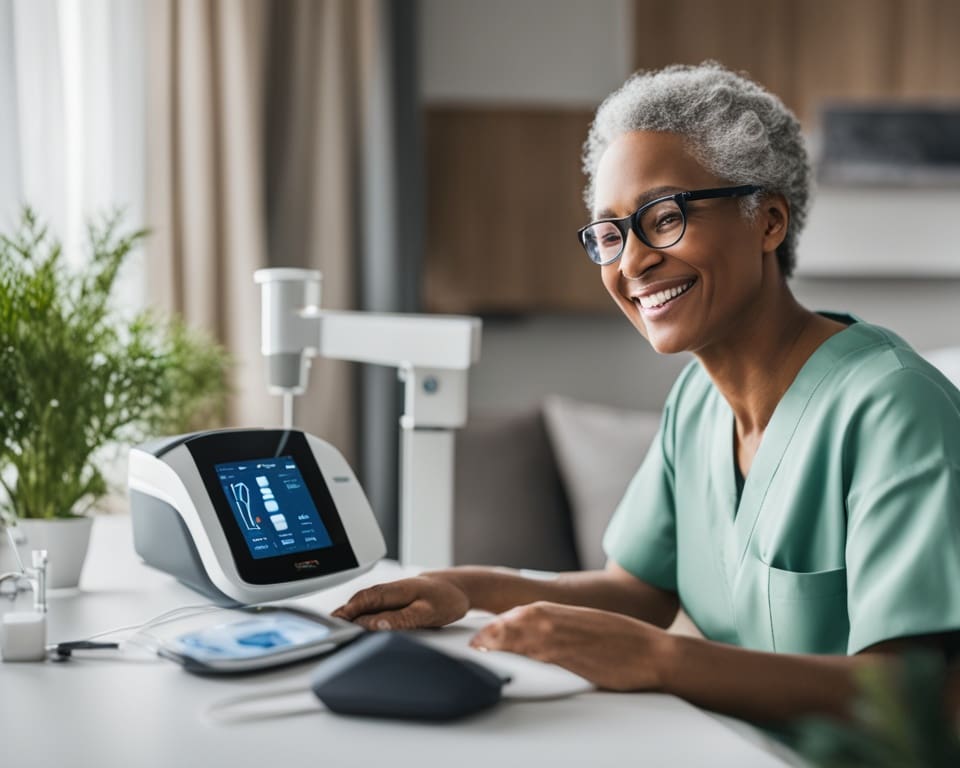Remote Patient Monitoring (RPM) is transforming the landscape of healthcare, providing innovative solutions that allow for continuous health monitoring outside traditional clinical settings. Through cutting-edge patient care technology, healthcare providers can collect vital health data in real-time, utilizing connected health devices like blood pressure monitors, glucose meters, and heart rate monitors. This not only enhances patient outcomes by enabling improved health management but also fosters greater patient engagement, empowering individuals to take control of their health journey.
Furthermore, RPM simplifies digital patient management, equipping providers with the insights needed to recognize health trends and respond swiftly to any emerging concerns. As a result, healthcare delivery is evolving into a more proactive and personalized approach, ensuring that patients receive the care they need when they need it.
The Benefits of Remote Patient Monitoring
Remote Patient Monitoring revolutionizes healthcare by providing various advantages for both patients and providers. The integration of telemedicine solutions into everyday healthcare practices fosters a more effective and engaging experience. Highlights of these benefits include improved patient engagement, enhanced accessibility to healthcare, and cost-effective solutions for patients and providers.
Improved Patient Engagement
With Remote Patient Monitoring, patients feel more connected to their healthcare providers. This technology encourages active participation in their health management. Regular check-ins and monitoring provide timely feedback, leading to an empowered patient who can make informed decisions. Increased communication fosters a relationship that nurtures trust and support.
Enhanced Accessibility to Healthcare
Remote Patient Monitoring significantly enhances accessibility to healthcare services. Individuals in remote areas or those with mobility issues can receive the necessary medical attention without the burden of travel. By leveraging telemedicine solutions, healthcare providers can reach a broader audience, ensuring that everyone receives the care they need, when they need it.
Cost-Effective Solutions for Patients and Providers
Cost-effective healthcare emerges as a prominent benefit of Remote Patient Monitoring. Patients save on travel expenses and time off work. Healthcare providers can optimize their resources and focus on high-priority cases. The overall reduction in healthcare costs without compromising quality makes this approach beneficial for the entire healthcare ecosystem.

Remote Patient Monitoring: How It Helps
In today’s rapidly evolving healthcare landscape, Remote Patient Monitoring (RPM) is reshaping the framework of traditional patient care. This innovative approach enables healthcare providers to track patients’ health data continuously, allowing for timely interventions and personalized treatment plans. By fostering better communication between patients and providers, RPM is not just enhancing patient outcomes but also paving the way for a more proactive healthcare model.
Transforming Traditional Patient Care
The integration of telehealth services has fundamentally altered the way healthcare is delivered. Patients are no longer confined to the walls of a clinical setting; instead, they can receive care in the comfort of their own homes. This transformation helps to address the challenges of accessibility and convenience, ensuring that patients remain engaged in their health journeys. As healthcare providers harness the power of RPM, traditional patient care becomes more dynamic and responsive, focusing on the individual needs of each patient.
The Role of Connected Health Devices
Connected health devices play a pivotal role in the success of Remote Patient Monitoring. These tools, ranging from wearable fitness trackers to sophisticated medical devices, collect vital health metrics in real-time. By aggregating this data, healthcare providers can identify trends and make informed decisions more efficiently. The seamless integration of connected health devices ensures that both patients and healthcare professionals stay informed and connected, reinforcing the importance of collaboration in achieving better health outcomes.









